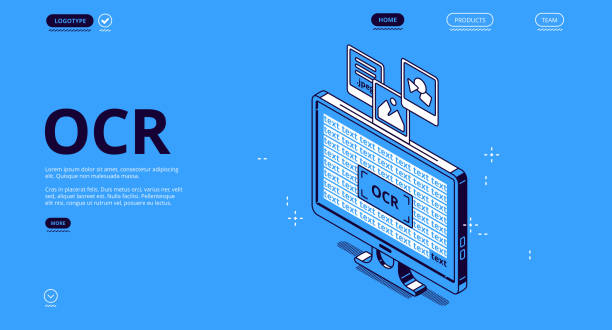OCR technology recognizes all the handwritten and printed characters and converts them into machine-readable formats. Whether it is a serial number or any code consisting of letters and numbers, OCR can transform them all in the digital output. Optical Character Recognition uses different techniques In simple words, the input image is processed, and then the characters are extracted as well as recognized. OCR scanning does not consider the nature of an object while scanning, it just looks at the characters that you want to put into digital format. For instance, when you scan any word, it learns and recognizes its letters but not the meaning.
Process of Optical Character Recognition
Three basic steps of the OCR process include:
- Image Pre-Processing
OCR technology pre-processes the images to improve the probability of successful recognition. The main goal to pre-process the image is to improve the actual data of the image. So, all the distortions are suppressed and the particular features of an image are enhanced. It is essential for the below-mentioned steps.
- Character Recognition
To recognize the character, it is critical to understand what a “feature extraction” actually is. When the data to be processed is so large, only those features are chosen that are considered the most important, and those which are considered unnecessary are ignored. Using a reduced set of data instead of the large one at the beginning improves the performance.
- Post-Processing
Another mistake correcting technique that enhances OCR accuracy is post-processing. If the output is limited by a lexicon, the accuracy could be enhanced even more. As a result, the algorithm can revert to a list of terms that are permitted to appear in a scanned document.
The character recognition app can read codes and numbers in addition to identifying appropriate words. This is handy for recognizing long chains of letters and numbers, such as serial numbers, which are utilized in different sectors.
Some providers began developing specialized optical character readers to better respond to various forms of input OCR. These algorithms are capable of dealing with unusual images, and they have merged numerous optimization strategies to boost recognition accuracy even further.
For instance, they use business standards, standard phrases, and rich information used in a colored image. This method of combining multiple optimization techniques is known as”application-oriented OCR” or “customized OCR”. Business card OCR, ID card OCR, or invoice OCR is all examples of applications that utilize it.
Applications of OCR
Optical character recognition has a wide range of applications since it may be integrated with a variety of technologies. Some common applications of OCR text recognition are as under:
OCR in Identification Process
Machine-readable zones on passports and identification cards can be scanned. The use of optical character recognition can help identify and register persons more quickly. This is beneficial to security personnel at checkpoints and borders. It could also be utilized for commercial purposes, such as the check-ins at hotels or perhaps the registration procedure in banks and other organizations, to enhance client involvement.
OCR in Marketing Campaigns
OCR document scanner is being used by leading brands to create new and engaging campaigns that increase customer engagement. Consider how many promo codes users can use by simply entering them in. Or, you may need to gather digits printed underneath a bottle cap.
OCR may be used in all of these initiatives and the software integrates readily into apps and company websites. Customers will no longer be required to type in a string of numbers and letters, reducing the difficulty of online registration.
How PepsiCo scans coupon codes inside packages of popular chips like Lays, Doritos, and Ruffles during their marketing efforts is an example of OCR services.
OCR in the Payment Processes
The IBAN referred to as “International Bank Account Number” is used to recognize bank accounts that are located in different countries. IBANs are available in a variety of lengths and can include both digits and letters. Online banks can simply integrate OCR software or use mobile OCR to help with cross-border transactions. As a result, instead of putting in their IBAN, their clients can scan it.
Final Thoughts
Data mining and processing are what every business has to deal with all around the world. Processing large amounts of consumer data can be difficult for online firms. And if done manually, it not only is time-consuming but also is costly as the company needs to hire manpower to get the data processed. To solve this issue, OCR scanning is the best choice. It not only removes the need to hire professionals but when integrated with artificial intelligence, it converts paper-based documents into digital PDFs instantly.




